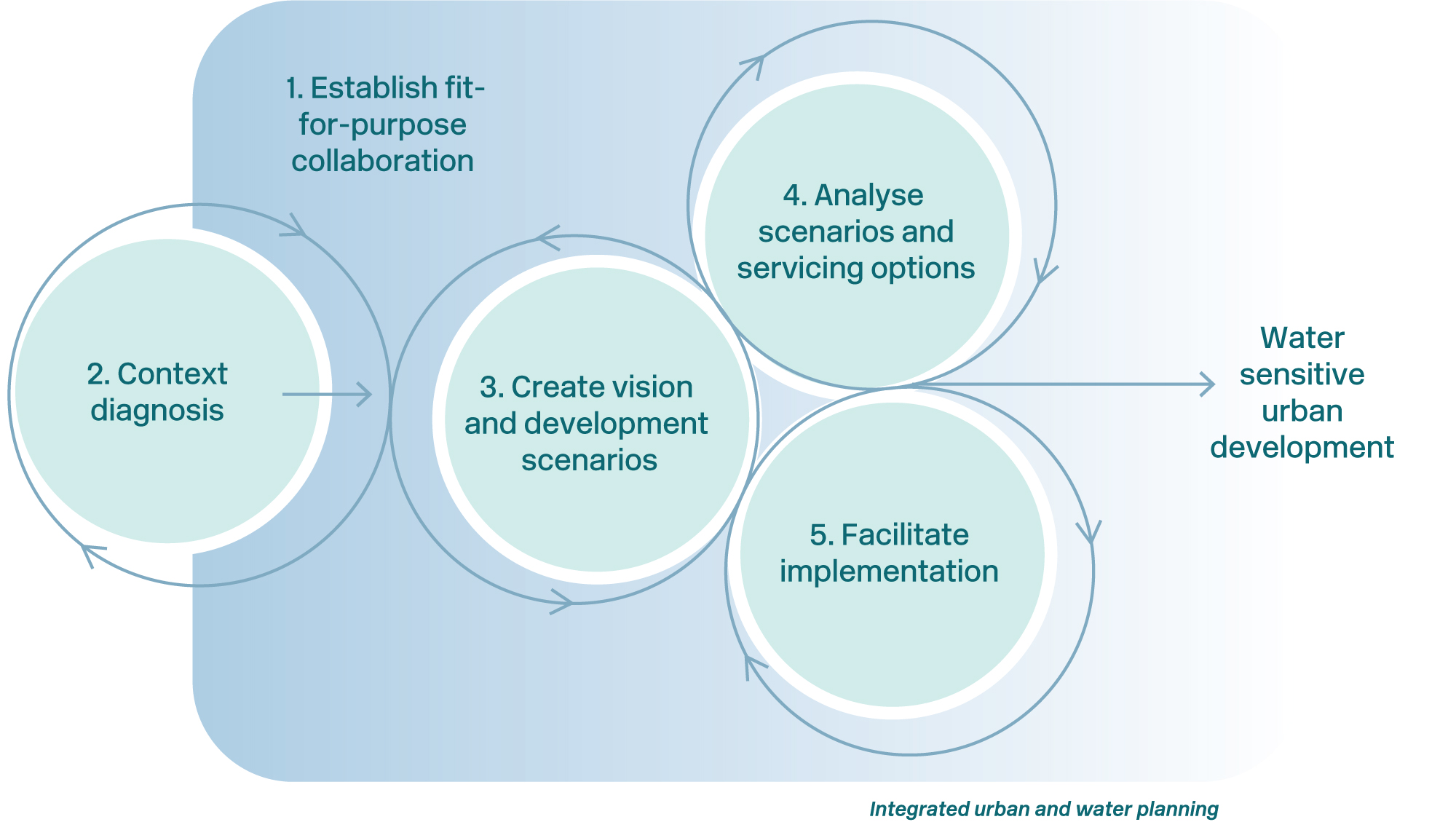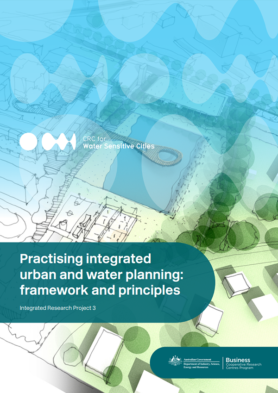Find out how to integrate urban and water planning
This framework and principles can help practitioners design collaborative, context-sensitive and integrated approaches to urban and water planning.
Importantly, the framework and principles recognise there is no single approach to delivering water sensitive outcomes. Instead, they aim to prompt practitioners to think holistically about their context so they can design their own planning pathways for delivering water sensitive urban development.
Interested in applying the Integrated urban and water planning framework?
Email admin@crcwsc.org.au
Where to find more information
You’ll find more information about benchmarking your city on the following pages:
Useful resources
The framework identifies 5 planning activities
- Establish a fit-for-purpose collaboration – This is about bringing together all the relevant stakeholders from different sectors to define and advance a shared agenda for a place.
- Investigate the development context – This involves understanding the biophysical and socio-institutional attributes of a place, to identify local opportunities and challenges.
- Create a place-based vision and set of development scenarios – This involves creating a shared vision for a place that aligns stakeholder aspirations and builds momentum towards its realisation.
- Analyse development scenarios and servicing options – This involves testing, comparing and refining different development scenarios and water servicing options, to identify the ideal scenario.
- Facilitate implementation – This involves embedding the optimised development scenario and servicing options within policies and plans, funding and financing, and service delivery arrangements.

Core principles help interpret and apply the framework
These core principles guide practitioners, by helping them interpret and apply the framework.
- Different entry points – Although the framework presents planning activities sequentially, they are more likely to occur iteratively and may overlap, potentially creating different entry points for integrated urban and water planning.
- Contextual awareness – There is no one-size-fits-all approach to integrated urban and water planning. The unique features of a particular context need to inform the planning, design and implementation of urban development.
- Multi-scalar perspective – The focus of planning activities should not be confined to the site or precinct under investigation; a place should also be understood within its broader catchment and regional context.
- Levels of practice – Each framework application will look different, depending on the ambitions, aspirations and complexity of context.
- Agents of change – Individuals and organisations can determine the success of any planning activity. To ensure the best outcomes, planning activities should consider the personal qualities and skills of individuals involved, as well as their connections across organisations and communities of practice.
A guideline explains each activity and illustrates it with examples from around Australia.
